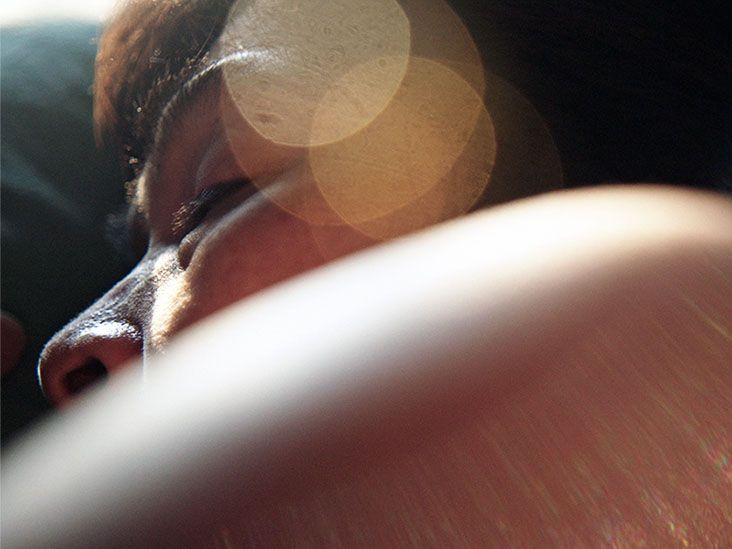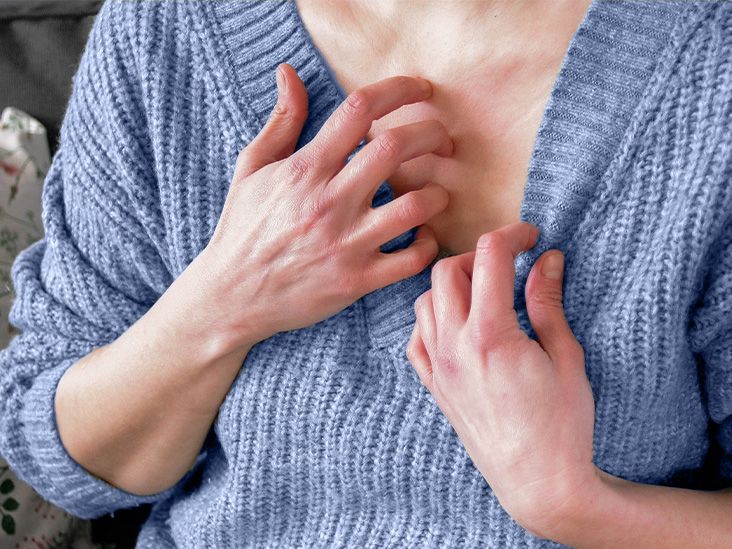A person may notice pinpoint dots on their skin for a number of reasons, ranging from heat exposure to an infectious disease. The dots may be red, skin-colored, gray, or darker than the person’s skin, depending on the skin tone.
Many causes of dots on the skin are harmless and resolve on their own. Others may need at-home or over-the-counter (OTC) treatment.
In this article, we discuss some possible causes of dots on the skin, their treatment options, and when to contact a doctor.
Here are some images of rashes involving small red dots or other features.
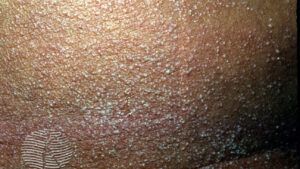
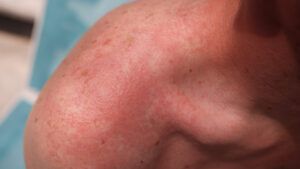
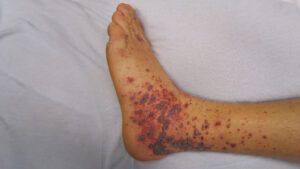

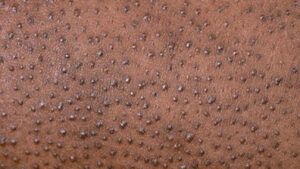
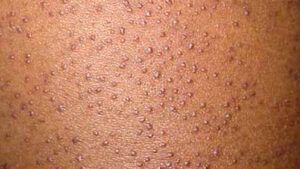
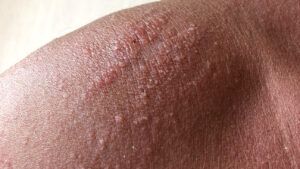
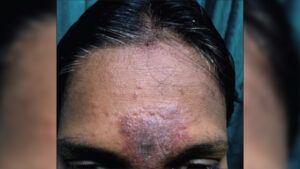
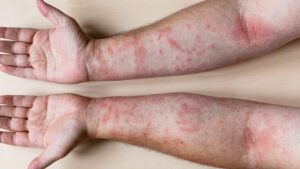
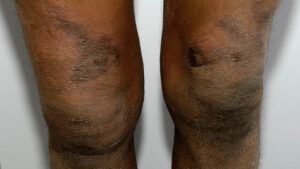
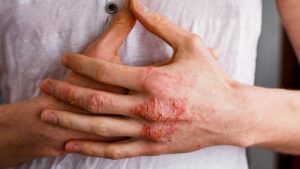
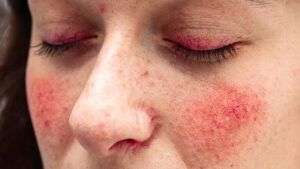

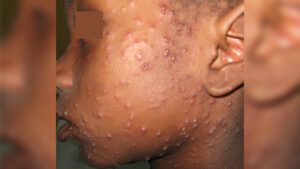

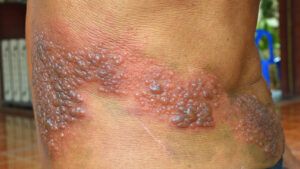
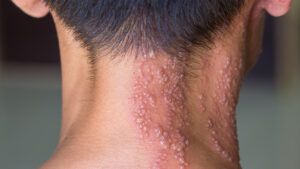

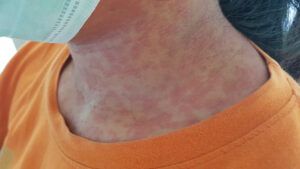

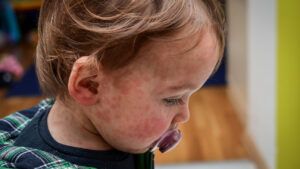
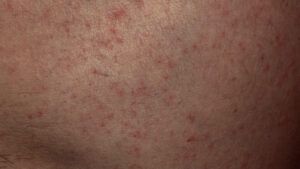
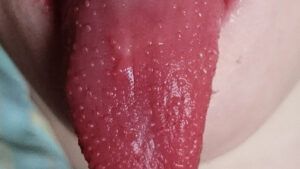
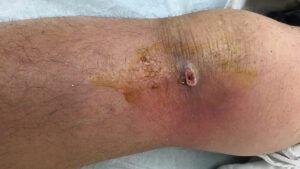
Heat rash, or miliaria, is a disorder involving vesicles, papules, and pustules of the skin. It occurs when the sweat glands become blocked, trapping sweat in the deep layers of the skin.
A heat rash can affect anyone, but it is
Symptoms of heat rash include:
Treatment
Treatment typically involves using lotions to soothe the itching, irritation, and swelling. Heat rash usually goes away within
Other tips include:
- keeping the skin cool
- taking cool showers
- avoiding tight-fitting clothing made with synthetic fibers
Keratosis pilaris (KP) is a common skin condition that causes tiny red, white, or flesh-colored bumps on the skin.
It most often affects the outer parts of the upper arms and thighs. It can also affect the forearms and upper back, but this is less common.
Symptoms of KP include:
- skin that feels rough or dry
- patches of small, painless bumps on the skin
- itching
People sometimes call KP strawberry skin or chicken skin.
Treatment
People can treat the symptoms of KP with:
- moisturizers containing urea or lactic acid
- alpha hydroxy acid
- glycolic acid
- lactic acid
- retinoids
- salicylic acid
- light therapy
- laser hair removal if KP is from shaving and other treatments do not help
Contact dermatitis occurs when a person comes into contact with a substance that irritates their skin or triggers an allergic reaction.
Symptoms vary depending on the trigger and the severity of the reaction.
They include:
- a rash that appears in geometric patterns or shapes
- dry skin that flakes and cracks
- a bright, flushed skin rash
- clusters of small dots on the skin
- hives, or extremely itchy welts on the skin
- intense itching, tightness, or burning sensation
- fluid-filled blisters that ooze and crust over
- dark, thickened skin
- sensitivity to sunlight
Treatment
Treatment for contact dermatitis depends on the cause and severity of a person’s symptoms.
Mild to moderate symptoms improve when a person avoids contact with the irritant or allergen. If possible, people should:
- avoid skin care products that contain harsh or irritating chemicals
- avoid nickel– or gold-plated jewelry
- avoid foods or medicines that cause allergic reactions
- wear protective clothing in work environments or areas with poisonous plants
If the rash affects only a small area, a person can apply 1% hydrocortisone cream, which is available OTC.
A doctor can prescribe stronger topical steroids for people who find OTC medication does not help.
Atopic dermatitis, is a type of eczema and a chronic inflammatory skin condition.
There are many types of eczema. Follicular eczema affects the hair follicles. Papular eczema involves small bumps on the skin known as papules. These papules can appear pinkish red on lighter skin or grayish brown on darker skin tones.
Other symptoms of eczema include:
- itchy skin
- warmth and swelling of the skin
- dry, flaky skin
- clusters of small, fluid-filled blisters
- blisters that leak fluid and crust over
Treatment
The following measures can help manage atopic dermatitis symptoms and reduce the risk of a flare-up:
- taking prescription medications, such as steroids and antihistamines
- undergoing phototherapy or light therapy
- applying a moisturizer to treat dry, cracking skin
- using an unscented, gentle laundry detergent
- avoiding triggers, such as dry air, stress, wool products, and allergens
For severe atopic dermatitis that does not respond to the above treatment options, a person should see a board-certified dermatologist.
Rosacea is a skin condition that causes skin irritation, inflammation, and small pimples, which can be red, violet, or flesh-colored.
Rosacea can occur at any time of life, but it most commonly appears
Symptoms of rosacea include:
- irritated or inflamed skin on the forehead, nose, cheeks, and chin
- blood vessels that are visible under the skin
- clusters of small bumps or pimples
- thick skin on the face
- red, itchy, or watery eyes
- inflammation of the eyelids
- blurred vision
In people with darker skin, the following features may help diagnose rosacea:
- a persistently warm or tight feeling on the centre of the face
- red or violet discoloration of the central face
- acne-like breakouts that do not resolve with typical acne treatments
- itching, burning, or stinging when applying products to the face
- itchy irritated eyes
Treatment
Some strategies that can help relieve rosacea symptoms include:
- avoiding triggers, such as ultraviolet light, alcohol, and harsh chemicals
- washing the face with gentle cleansers
- frequently using moisturizers
- wearing a broad-spectrum sunscreen with SPF 30 or higher
Medical
- oral and topical medications
- laser or light therapy
- surgery, in some cases, to remove thickened skin
Certain infections can also lead to red or skin-colored dots on the skin. Anyone who suspects an infection should consult a doctor.
Chickenpox or shingles
The varicella-zoster virus causes these infections. They involve inflamed, itchy, fluid-filled blisters.
Chickenpox
Shingles occurs in adults who have already had chickenpox. According to the
Rubella
This contagious viral infection causes a distinctive rash of small red or pink dots. The dots may be harder to see on darker skin tones.
The rash usually starts on the face before spreading to the trunk, arms, and legs. Rubella infections also cause a fever, a headache, and swollen lymph nodes.
The
Meningitis
Meningitis is a medical emergency. It is the inflammation of the membranes that cover the spinal cord and brain. It typically results from a bacterial or viral infection.
Symptoms of meningitis include:
- fever
- stiff neck
- headache
- nausea
- light sensitivity
- confusion
- vomiting
A rash does not always appear. However, if it does, a person might notice small pink, red, brown, or purple pinpricks on the skin. The rash will not fade when a person rolls a glass over it.
MRSA (staph) infection
Methicillin-resistant Staphylococcus aureus (MRSA) is an infection due to bacteria that
MRSA can lead to painful areas of inflamed skin. People may also experience pus drainage from the affected skin and a fever.
Other bacterial infections of the skin may also cause painful and inflamed areas of the skin. If a person suspects that they are experiencing a skin infection, they should consult a doctor.
Scarlet fever
Streptococcus bacteria cause a scarlet fever infection.
Symptoms include:
- a rash that usually starts below the ears on the neck and can spread across the whole body
- a rough texture to the skin
- red streaks and lines in skin folds
- a sore, inflamed throat that may have red spots on it
- a red tongue, sometimes called a strawberry tongue
- a fever
- a general feeling of being unwell
The rash usually appears 12–48 hours after the fever and other symptoms begin. It may start to fade and peel by day 6.
The rash consists of small dots that are rough to the touch.
Petechiae form a type of rash that results from bleeding under the skin. It shows as red or purple spots that measure
On darker skin, the spots may appear darker than the surrounding skin. They may be harder to see than on lighter skin.
It can occur with many diseases and conditions, such as:
- meningitis
- Rocky Mountain Spotted fever
- COVID-19
- leukemia
- sepsis
- endocarditis
- low levels of vitamin K
- a reaction to certain medications
The treatment for petechiae will depend on the cause. It can be a sign of severe illness. Anyone who notices petechiae unexpectedly, particularly in a child, should seek urgent medical help.
Anyone with signs of an infection or unexpected skin symptoms should seek medical advice.
They should also speak with a doctor if a rash does not improve despite using OTC or at-home treatments or if they also have the following symptoms:
- fever
- severe head or neck pain
- joint pain or stiffness
- difficulty breathing
- frequent vomiting or diarrhea
- confusion
- dizziness
Skin rashes come in a variety of sizes, colors, and textures.
Not all rashes require emergency medical treatment. However, people should seek immediate medical attention if they have a rash and notice any of the following symptoms:
- a rash that covers the entire body
- fever
- blisters or open wounds
- difficulty breathing, speaking, or swallowing
- swelling of the face, eyes, or lips
- stiff neck
- light sensitivity
- seizures
- drowsiness or unresponsiveness
People should also seek immediate attention for any new rashes that are painful and that affect the eyes, inside of the mouth, or genitalia.
When in doubt, a person should seek the opinion of a primary care provider or board-certified dermatologist.
If a person suspects a skin infection, they should contact a healthcare professional before trying any home remedies.
To relieve and manage skin rashes, people can try the following home treatments:
- using mild, unscented soaps, body washes, and cleansers
- avoiding bathing or showering in hot water
- keeping the affected skin dry and clean
- wearing loose-fitting, breathable clothing
- avoiding rubbing or scratching the skin rash
- applying a cold compress to relieve swelling and pain
- applying aloe vera to the affected skin to reduce swelling and soothe pain
- using moisturizers to hydrate dry, flaky skin
Here are some questions people often ask about dots on the skin.
What causes tiny red dots on the skin?
A wide range of conditions can cause dots on the skin. Possible causes range from a reaction to an irritant to meningitis. On pale skin, they may appear pink or red. On darker skin tones they may appear as purple, dark brown, or darker than the surrounding skin.
Does leukemia cause red spots?
Red, purple spots, or dark spots known as petechiae, can be a sign of leukemia and many other conditions. It is best to seek medical advice if a person develops petechiae, as they may indicate a problem that needs urgent attention.
Are petechiae serious?
Petechiae can happen for many reasons, including an injury, in which case, it will usually resolve on its own. However, it can also happen with meningitis, blood cancer, endocarditis, and sepsis. These are all serious conditions that need medical attention, so it is best to seek medical advice for any appearance of petechiae.
There are many possible causes for red, skin-colored, or dark dots on the skin, including heat rash, contact dermatitis, and meningitis.
People can treat some skin rashes and their accompanying symptoms with home remedies and OTC treatments, but it is best to check with a doctor first, as dots on the skin can sometimes indicate a more serious condition.
A doctor or dermatologist can diagnose the underlying cause and make appropriate treatment recommendations.

